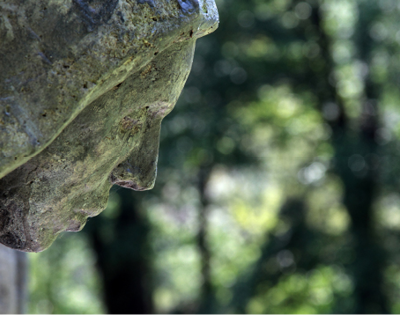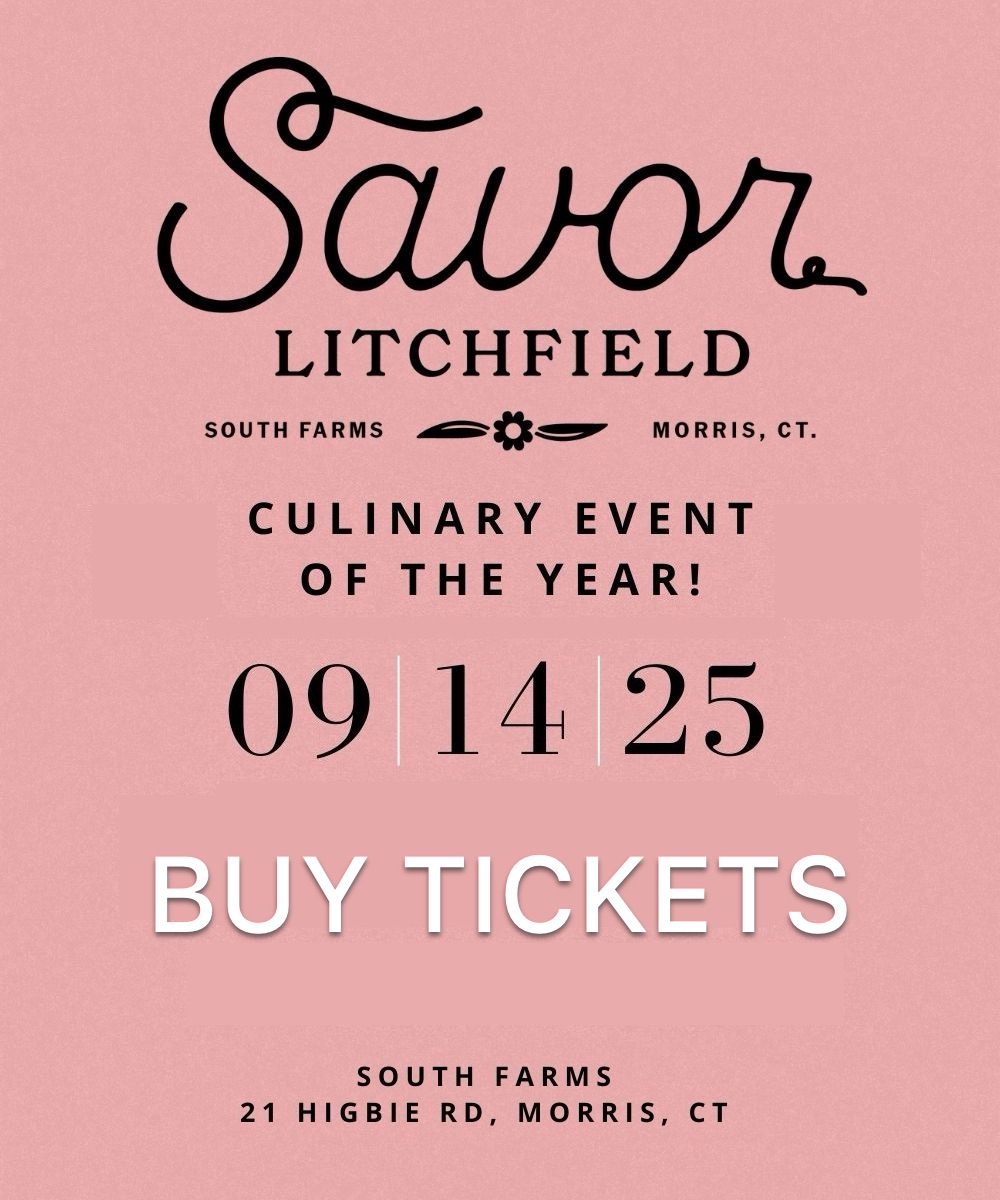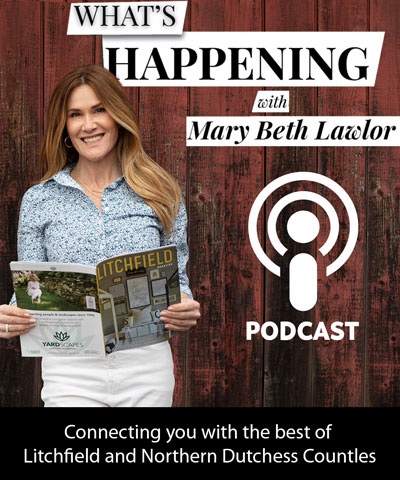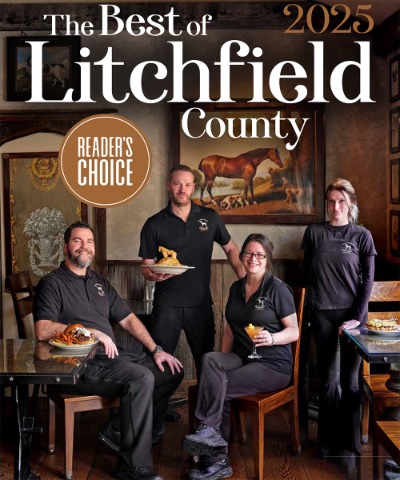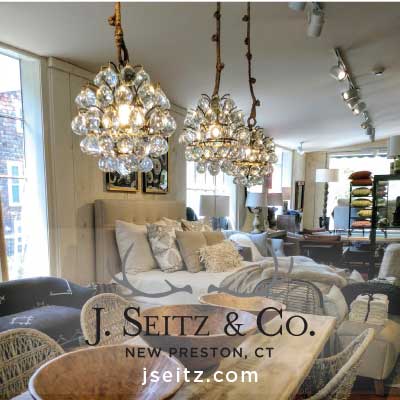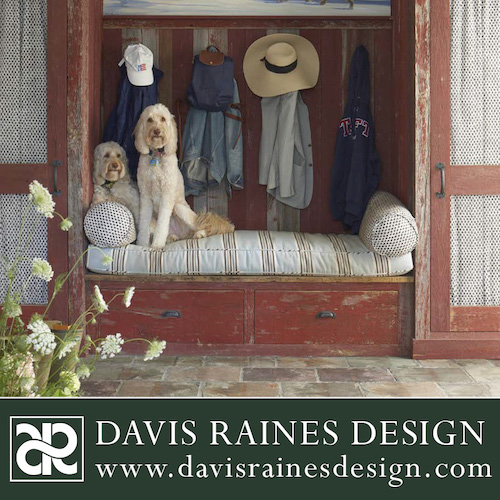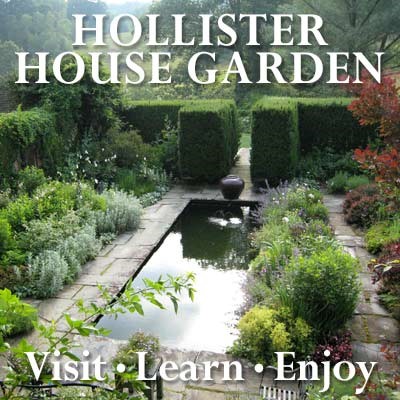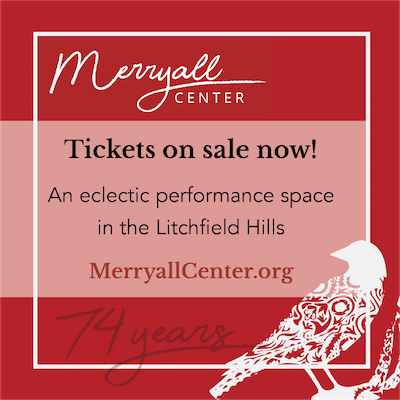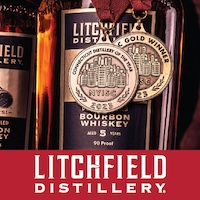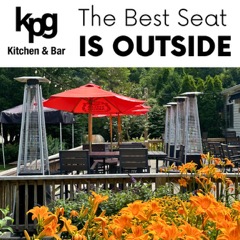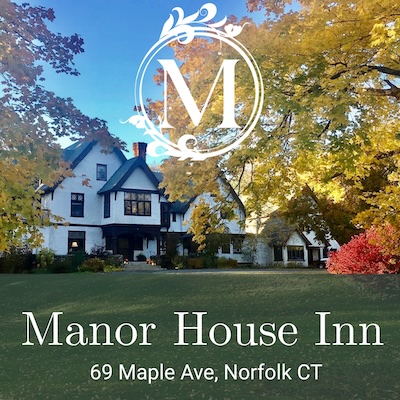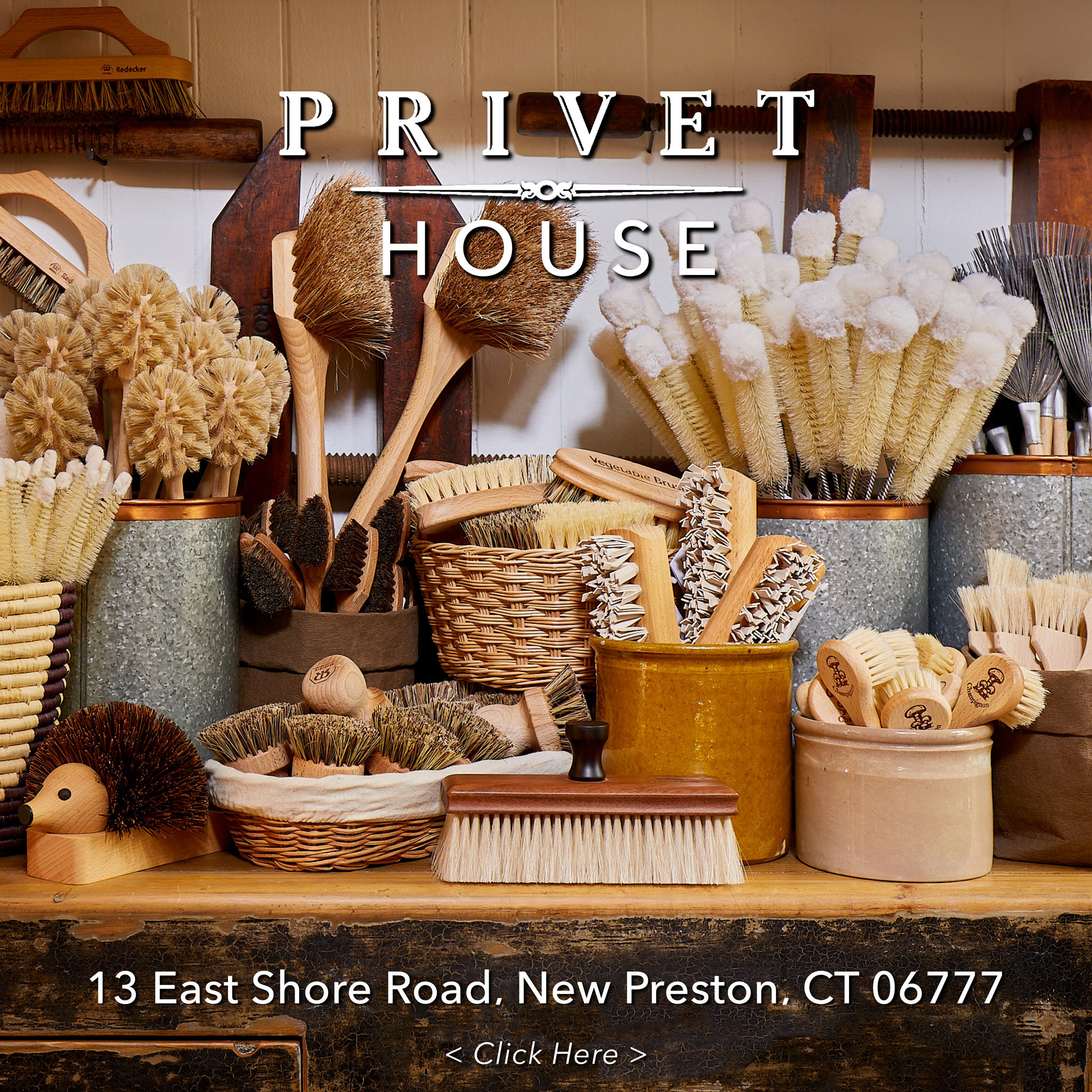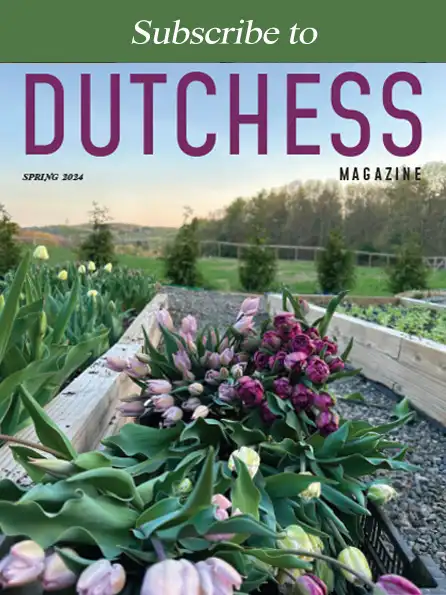September 1, 2014
Art collectors Edwin and Thayer Hochberg open their exquisite sculpture garden in New Preston to members of WAA as part of the upcoming event Sculpture in Landscape Tour.
In the minds of Edwin and Thayer Hochberg, collecting outdoor sculpture provides the opportunity for a deeper experience of landscape, and of life in general. Over the past 37 years, they have transformed the grounds of their historic New Preston home, the 60-acre Couch Estate, into an expansive sculpture garden featuring a wide array of local and international contemporary artists. On a recent summer’s day, photographer William de la Mare and I met with the Hochbergs to discuss and document their collection, which will be one of two private outdoor sculpture collections open to members of the Washington Art Association to tour on September 6.
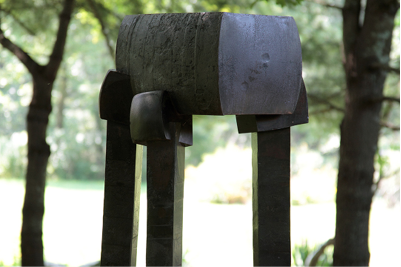
The Hochbergs’ garden includes an alluring and eclectic mix of sculpture by artists of all ages, in different career stages. They have works in steel, aluminum, and concrete by abstract expressionists Dorothy Dehner, and Caspar Henselmann. They have a highly tectonic, post-minimal sculpture in wood by Tom Doyle. Mia Westerlund’s pieces, which can be found in the garden and in the converted barn on the property, utilize softer materials such as lead and fiberglass, rendered in fleshy, sensual forms. They also have several figurative pieces, including a trio of monumental seated figures in cast concrete by Deborah Masters.
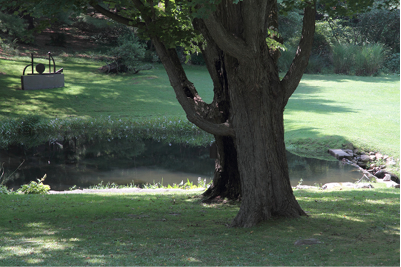
The Hochbergs know their work intimately, they know about the materials and construction of the pieces, and they take personal interest in the lives of the artists they collect. As a consequence, each piece carries a story, and each piece receives their ongoing love and attention.

In 1985, they acquired the first piece for their outdoor collection, an abstract assemblage in Cor-Ten steel by Dorothy Dehner called “Sun Down.” Dehner was also sculptor David Smith’s first wife, but, as is often the case with female partners to highly successful male artists, hers is not a household name. When I asked if they knew whether Dorothy and David worked on their welding side by side, the Hochbergs said no, Dorothy was not permitted to work in David Smith’s shop at all. Dehner’s work was designed on paper and in maquettes, and then fabricated, which remains common practice for monumental steel sculpture. They are careful to add that their piece is unique, and not made in series.
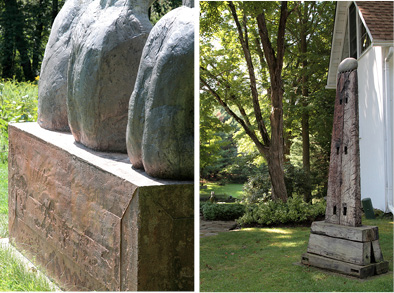
With a hands-on approach to acquiring and installing work that includes nurturing friendships with artists, personally siting work, and even maintaining it themselves, the Hochbergs’ passion for art and design is palpable. Their vivacity and creativity permeate all they do. Mr. Hochberg has even had a hand at making his own artwork. Displayed in their converted barn, is a series of miniature fired-clay pieces he made in a class at the Washington Art Association. They are coupled nudes made in a deliberately rough, art-brute fashion and arrayed on a tabletop. “I call these ‘X-rated,’ inspired by life and the Kama Sutra,” he says, with a twinkle in his eye.
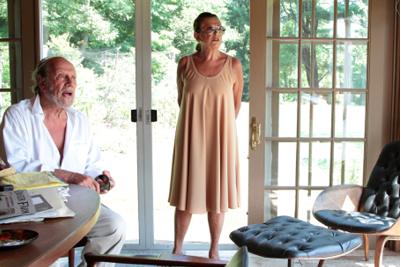
The following excerpts are from conversations with Mr. and Mrs. Hochberg while touring the collection. Images are courtesy of photographer William de la Mare.
Jessica: So when did you start collecting art?
Edwin: We’ve always been collecting in different ways. I started with Early American stoneware, and in fact we had a show of the collection at the Gunn Museum in Washington a few years ago. The first piece I bought I paid $5 for; the last piece I bought set a world record, and I said, “This is no fun any more! This is serious business when you have to fork out all these dollars!”
Thayer: We have a friend who is a major collector in New York. She got us into collecting contemporary art in the 1980s. We went to Storm King Art Center in New York and to Europe, and we defined our taste. In the mid 1980s, we started doing our gardens here. Through Storm King, we got to know Alex Lieberman and a few other artists, and Ed got on the board of the Sculpture Center in Long Island City, New York. It all just evolved as the years went on. We decided we were going to collect living artists: that was the inception of our collection.
Edwin: Well they were living—they do die!
Thayer: Yes, sadly Alex Lieberman passed away in 1999. But we want to know them, we want to meet them.
Jessica: And collecting is something you do together?
Thayer: Oh yes, we have been together 49 years —so we’re together! The stoneware was his baby, but I decorate. Ed is the caretaker of all of these works. If it needs waxing, or preserving, he does it himself. A lot of people wouldn’t bother, but it’s not my husband’s nature to let things just happen!
I have a new kitchen, so when I look out, not only do I see beautiful flowers but I really can enjoy the work. It integrates into our lives. There are not enough people who collect outdoor sculpture, which really is amazing to me, because everyone has such beautiful grounds, and it’s such an opportunity.
Edwin: We have a concept about how to show sculpture. If you ever go to a sculpture garden where they have a small field and they have 10 pieces, they distract from one another. Our concept is that every piece has a room. We try to place it so it’s in its own room, and some of it you come upon, so that it’s sort of unexpected.
Thayer: Each piece is in its own environment… but you have to have an eye; not everybody can do it without help.
Jessica: Do you work with art advisors to select pieces for purchase?
Thayer: No, we don’t. We don’t purchase anything for investment purposes.
Edwin: Everything is worthwhile. My concept is this: You don’t buy art for appreciation [of value], because you never know if it will. You buy it to live with and enjoy, but if, as a consequence, it goes up—as many pieces in our collection have—then that’s great! But we don’t buy it because we want to sell; we just buy it to enjoy it.
Thayer: It’s not in our nature to buy for investment.
Edwin: What’s the difference what the value is? You’ve had fun with it and enjoyed it.
On September 6, 2014, the Hochbergs will have one of two outdoor sculpture collections open to members of the Washington Art Association. Tickets are $50 per person for both tours (the other tour is in Roxbury).
Time periods are at 10 am, 11:15 am, and 12:30 pm. Go to www.washingtonartassociation.org for tickets and for more information on the many WAA sculpture-related events happening in Washington this month. Or go to our listing of this event in GOINGS ON.





